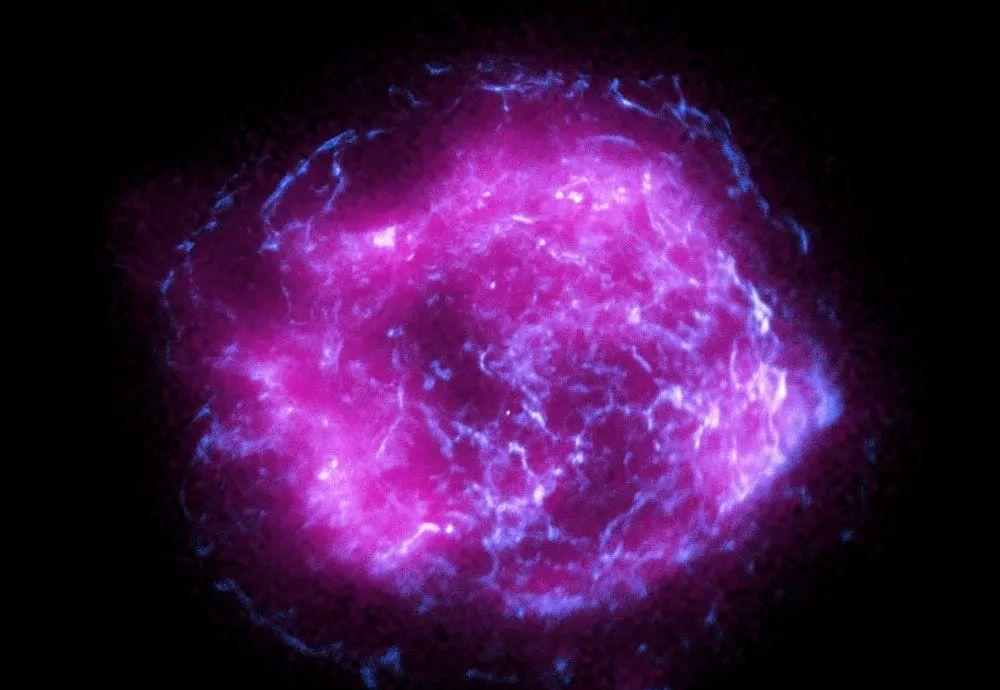Recently, a $188 million space telescope took the first space photo, revealing the process of supernova explosion, and the afterglow is not spectacular.

A few days ago, a space photo taken by the James Webb Space Telescope, which was in the debugging stage, exploded on the Internet, which was reprinted and forwarded by countless media people, because this is the first photo taken since the Webb Telescope was launched, proving that the Weber Telescope is intact, and it can work normally after only the main mirror surface is debugged.
As a result, everyone focused on the Weber Space Telescope and ignored the launch of another space telescope, which is NASA's X-ray Imaging Polarization Probe (IXPE), which uses X-rays to explore the universe like NASA's Chandra X-ray Space Observatory.
Space telescopes are generally divided into three categories, visible light, infrared and X-rays, visible light has no penetration ability, visible light can not penetrate the substance, infrared can penetrate, infrared can not penetrate the substance, X-ray can penetrate, it can be seen that X-ray penetration is stronger, IXPE is of course the world's most advanced space telescope.
Weighing 330 kilograms, 1.1 meters in diameter and 5.2 meters long, the IXPE has a 2.7-meter expansion length and is manufactured by Ball Aerospace & Technologies OHB Italia for a total of $188 million, but funded by NASA and the Italian Space Agency (ASI), which measure the cosmic X-ray polarization of black holes, neutron stars and pulsars.
On December 9, 2021, a SpaceX Falcon 9 rocket sent IXPE into a low-Earth orbit at a height of 540 kilometers, planned to run for 2 years, after more than a month of debugging and proofreading, IXPE slowly adapted to the space environment, and finally began to collect scientific data in mid-January 2022.
Soon, IXPE was targeting a supernova explosion called Cassiopeia A, counting the time, a star that exploded before the 17th century, but only now did electromagnetic waves reach Earth. IXPE took the opportunity to take the first photograph revealing the supernova explosion of Cassiopeia A, which was full of afterglow and was not spectacular.
According to images taken by IXPE from January 11 to January 18, the X-ray intensity released by the supernova explosion of Cassiopeia A is increasing, from cold purple and blue to red and hot white, while the released gas cloud spreads to 10 light-years wide, shown in purple in the image, and the shock wave generated by the explosion heats the nearby gas cloud, emitting a bright glow.
But in the middle of the bright cloud of gas there is an ultra-dense object, either a black hole or a neutron star, formed by the collapse of the supernova explosion core.
In short, IXPE will study the universe's most mysterious objects, neutron stars, black holes, supernova explosions, and nebulae over the next two years. Recently, NASA has sent out a piece of bad news, that is, NASA Chandra X-ray Space Observatory has failed again.
Since its launch in 1999, the Chandra X-ray Space Observatory has been constantly updating our understanding of the universe, revealing the mysteries of black holes and neutron stars to us many times, but as of 2022, the Chandra Observatory has been operating for a full 23 years.
On February 9, 2022, Chandra Observatory had a power supply problem with high-resolution camera instruments, which caused the observation mission to be interrupted and put four scientific instruments in safe mode, but there was no problem in its own operation, and the task of observing neutron stars, black holes, supernova explosions and nebulae was all entrusted to IXPE. Interesting and informative scientific content, please pay attention to the only WeChat public account: Interesting Exploration